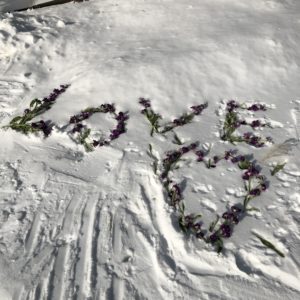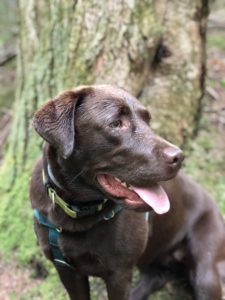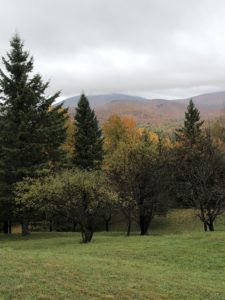 How sunshine affects one’s fitness level is obvious, but significant in definition. It is patently apparent that a good, sunny day puts a spring in our step and lures us outdoors to participate in a variety of healthy activities that might have seemed drudgery on a different day.
How sunshine affects one’s fitness level is obvious, but significant in definition. It is patently apparent that a good, sunny day puts a spring in our step and lures us outdoors to participate in a variety of healthy activities that might have seemed drudgery on a different day.
The physical advantages to exposure to sunlight include sizable doses of Vitamin D, which is credited to help strengthen bones and inhibit some forms of cancer. Thanks to Wikipedia, I also learned that UV exposure boosts endorphin levels, while simply viewing the sun through the eyes adds to “robust circadian rhythms and reduced risk of seasonal affective disorder.”
OK, so far nothing sounds like new news.
The dangers of sunlight are also familiar. Skin takes a beating with the risk of cancer and premature aging. Though some question the use of sunscreen, most strongly advise being adequately protected all seasons of the year. Furthermore, wearing sunglasses is encouraged – not so much as to appear suave, but to protect eyes that are vulnerable to damage resulting in cataracts and macular degeneration.
Once again, as with so much of what we live with in our personal lives and in the world around us, too much is too much and too little is too little. (When it comes to sunlight, “Conversely, sun avoidance is associated with increased mortality.” Wow.)
Finally, sharing again from Wikipedia, “…a number of public health organizations state that there needs to be a balance between the risks of having too much sunlight or too little.” Not exactly profound, but there again is that word BALANCE.
Leaving these thoughts behind, but ever cognizant of balance, let’s look at the lift a sunny day gives to motivation and energy. Living here in Vermont where a spectacularly clear day is treasured, as much as possible, those who live and work here do their best to adhere to the notion that, should one of those days dawn, rearrange the schedule and GET OUTSIDE! For many, this is why we live here. The scenery is gorgeous and there seems to be a shared expectancy that everyone here wants to actively appreciate it.
(On the other hand, there is a great deal of moaning and groaning when wet soggy days link together or, for some, when sub zero days do the same. In fact, something I personally don’t understand but do honor, quite a few complain of the heat when we hit 70 or above!)
In Yoga, practicing a few Sun Salutations first thing in the morning prepares body, mind and spirit to face the day with clarity and a degree of readiness. Whether the Sun is symbolic or actual, it propels us to move forward energetically which in turn maximizes whatever movement we are practicing and multiplies the gains.
For example, headed out the door for a fitness walk or training run, chances are that when the day is bleak, so too is the outing – a slog that is happily over at the end. On the other hand, if the sun is beckoning, steps are invigorated, faster, more powerful with resulting enhanced fitness and training rewards. Many bodily systems are taxed and, having risen to the challenge, are enhanced. Muscles strengthen, joints protect their range of movement, heart and lungs efficiently handle aerobic and anaerobic tests and even coordination, quickness and agility benefit. Emotionally the activity turns to pleasure, fun (maybe even play) and mentally, thinking becomes more creative and logical. Can we do this without the sun? Sure. We can. But environment is enormously influential as many architects and planners have learned.
Technically it is still spring. In some parts of the country it has apparently come and gone; in others it is still fragile. But the notion of new growth budding and blossoming and all that it represents is a notion to hold dear. Each new morning is the springtime of a day. Each new idea, each new adventure, each new connection is the onset of creativity and ultimate fruition.
But the notion of new growth budding and blossoming and all that it represents is a notion to hold dear. Each new morning is the springtime of a day. Each new idea, each new adventure, each new connection is the onset of creativity and ultimate fruition.
Perhaps it is helpful to view life itself as organic and those who seek the sunshine will grow accordingly. While awareness, education, protection and balance are integral to our best experience, so too are enthusiasm and joy.
And then there’s this:
“I have noticed that people are dealing too much with the negative, with what is wrong. … Why not try the other way, to look … and see positive things, to just touch those things and make them bloom?”
― Thich Nhat Hanh


 drives many minutes of each day. It is motivation that underpins major chunks of enthusiasm, fuels the determination to persevere, and keeps one moving on a forward path professionally, personally and simply in being alive.
drives many minutes of each day. It is motivation that underpins major chunks of enthusiasm, fuels the determination to persevere, and keeps one moving on a forward path professionally, personally and simply in being alive.
 On a personal note, I found myself slipping from some of the structured practices that I know benefit my day. Early morning journaling and meditation was being lost in a few minutes of extra sleep, at home Yoga practice was giving way to lethargy, outings in the woods with my pup were abandoned. Of course, there is solid reasoning behind this – I need that sleep or the woods are just too wet and messy right now. (Besides, the bears are waking up and they’re hungry!)
On a personal note, I found myself slipping from some of the structured practices that I know benefit my day. Early morning journaling and meditation was being lost in a few minutes of extra sleep, at home Yoga practice was giving way to lethargy, outings in the woods with my pup were abandoned. Of course, there is solid reasoning behind this – I need that sleep or the woods are just too wet and messy right now. (Besides, the bears are waking up and they’re hungry!) Because one of my goals is to be ready to hike when Vermont trails open again the end of May, I need to build strength and endurance now. Much to the delight of my dog, we are leash walking dirt roads a minimum of 3 miles a day, adding ½ mile to our one weekly long walk which should give us at least 10 miles by the time the hikes begin, adding at least one straight up climb each week (useful to live near a ski area that is closed for the season), and, for fun and mental flexibility, daily making sure to have plenty of off-leash ball play and some agility drills for both of us.itself.
Because one of my goals is to be ready to hike when Vermont trails open again the end of May, I need to build strength and endurance now. Much to the delight of my dog, we are leash walking dirt roads a minimum of 3 miles a day, adding ½ mile to our one weekly long walk which should give us at least 10 miles by the time the hikes begin, adding at least one straight up climb each week (useful to live near a ski area that is closed for the season), and, for fun and mental flexibility, daily making sure to have plenty of off-leash ball play and some agility drills for both of us.itself.
 Yoga Teacher Training has found itself in the spotlight and presumably would be happy not to have done so. This, from a client, just arrived in my inbox:
Yoga Teacher Training has found itself in the spotlight and presumably would be happy not to have done so. This, from a client, just arrived in my inbox:  And then came my introduction to Yoga, just 3.5 years ago. Almost immediately thereafter I pursued my initial YTT believing that, though I had little interest in teaching, that would be the best resource for learning as much about Yoga in an intensive fashion as possible. Over a year later I completed my training, but in the meantime had found yet more exciting Yoga training which I jumped into with enthusiasm. Let me say here that I am deeply indebted to all the teachers with whom I have studied. (especially Terry Cochburn, Josh Summers and Sage Rountree,). Clearly my personal experience colors my opinions to follow.
And then came my introduction to Yoga, just 3.5 years ago. Almost immediately thereafter I pursued my initial YTT believing that, though I had little interest in teaching, that would be the best resource for learning as much about Yoga in an intensive fashion as possible. Over a year later I completed my training, but in the meantime had found yet more exciting Yoga training which I jumped into with enthusiasm. Let me say here that I am deeply indebted to all the teachers with whom I have studied. (especially Terry Cochburn, Josh Summers and Sage Rountree,). Clearly my personal experience colors my opinions to follow.
 Perhaps if a student enters YTT with a background in exercise science or something similar, 200 hours will provide a good foundation. In my own experience, I began with decades of training and professional practice , but little to no experience with Yoga. Yes, I learned many asanas and how to teach them. My 200 hour teacher was generous in teaching the principles of Ayurveda as well. What I was left with was a growing confidence teaching the physical components of Yoga practice, but in awe of teachers who were able to delve so deeply into the other and more spiritual aspects – you know, all about Patanjali, etc. My own training was very generic as my teacher did not want to label her teaching as one school of Yoga or another. I am grateful to her for that.
Perhaps if a student enters YTT with a background in exercise science or something similar, 200 hours will provide a good foundation. In my own experience, I began with decades of training and professional practice , but little to no experience with Yoga. Yes, I learned many asanas and how to teach them. My 200 hour teacher was generous in teaching the principles of Ayurveda as well. What I was left with was a growing confidence teaching the physical components of Yoga practice, but in awe of teachers who were able to delve so deeply into the other and more spiritual aspects – you know, all about Patanjali, etc. My own training was very generic as my teacher did not want to label her teaching as one school of Yoga or another. I am grateful to her for that. The absolute beauty of working with functional alignment is that practice and teaching are ever new, ever freshly creative and energized.
The absolute beauty of working with functional alignment is that practice and teaching are ever new, ever freshly creative and energized. It is about lifestyle, balance, medicine and spirituality just as much as it is about strength and flexibility. As you go to your mat, my recommendation is to make your Yoga your own. Whatever upheavals may rage in the Yoga community (and there are more than just ‘200 hour’ arguments!), leave them, for awhile anyway.
It is about lifestyle, balance, medicine and spirituality just as much as it is about strength and flexibility. As you go to your mat, my recommendation is to make your Yoga your own. Whatever upheavals may rage in the Yoga community (and there are more than just ‘200 hour’ arguments!), leave them, for awhile anyway.

 But just what is meditation? Is it as vast and unattainable as it appears? I am one of those who prefers an academic approach to any subject. In a lecture, I am the one scribbling madly trying to capture every word being said (and often missing the meaning in the process; yes, I know). I am the one who wants clear definitions. I want to know what skill sets are required and how to obtain them. I want to identify progress and see an end result.
But just what is meditation? Is it as vast and unattainable as it appears? I am one of those who prefers an academic approach to any subject. In a lecture, I am the one scribbling madly trying to capture every word being said (and often missing the meaning in the process; yes, I know). I am the one who wants clear definitions. I want to know what skill sets are required and how to obtain them. I want to identify progress and see an end result.
 My 20 minute morning practice: I took my seat in front of my wall of windows looking out at the snow covered landscape that lights up with morning color as the sun rises. My dog and I had already been for a walk and I had already had my first cup of strong coffee, so was ready to get down to it. But today, though physical stillness was, as usual, my go-to, my mind was active. So, I decided to “notice.” I noticed the warmth of my sleeping 65 pound dog as she tried to become one with my body. I noticed the increasing brightness beyond my closed eyelids. I began to think that just a week ago I was sitting in a studio doing just this in the company of a dear community.
My 20 minute morning practice: I took my seat in front of my wall of windows looking out at the snow covered landscape that lights up with morning color as the sun rises. My dog and I had already been for a walk and I had already had my first cup of strong coffee, so was ready to get down to it. But today, though physical stillness was, as usual, my go-to, my mind was active. So, I decided to “notice.” I noticed the warmth of my sleeping 65 pound dog as she tried to become one with my body. I noticed the increasing brightness beyond my closed eyelids. I began to think that just a week ago I was sitting in a studio doing just this in the company of a dear community. 


 Because I write in the venue of fitness, health, and well-being, I tend to translate what I encounter as applicable to the same. For example, I learned that the full moon is a call for balance. OK, physical balance is a no-brainer but so is balance in all aspects of our training and life experience. I hear that an eclipse represents power and fruition and can be transformative. Ditto.
Because I write in the venue of fitness, health, and well-being, I tend to translate what I encounter as applicable to the same. For example, I learned that the full moon is a call for balance. OK, physical balance is a no-brainer but so is balance in all aspects of our training and life experience. I hear that an eclipse represents power and fruition and can be transformative. Ditto. Nor is it all about darkness. What’s wrong with night skiing or skating at lighted venues or a moonlight snowshoe? (Perhaps the only caution here is to be certain of the route, let someone know where we are going, and please try not to get lost and tax a local rescue team. Maybe now is the time to learn how to use one of the many apps guaranteed to keep us from doing so!)
Nor is it all about darkness. What’s wrong with night skiing or skating at lighted venues or a moonlight snowshoe? (Perhaps the only caution here is to be certain of the route, let someone know where we are going, and please try not to get lost and tax a local rescue team. Maybe now is the time to learn how to use one of the many apps guaranteed to keep us from doing so!) And, finally, a few words to ponder: “I will love the light for it shows me the way, yet I will endure the darkness for it shows me the stars.” (Og Mandino)
And, finally, a few words to ponder: “I will love the light for it shows me the way, yet I will endure the darkness for it shows me the stars.” (Og Mandino) 
 This snow will melt. There will be more. Flexibility will always be needed. May we all have the energy, strength and courage to move with life’s changes and challenges in a way that is most beneficial to ourselves and others. May we all always be practicing students.
This snow will melt. There will be more. Flexibility will always be needed. May we all have the energy, strength and courage to move with life’s changes and challenges in a way that is most beneficial to ourselves and others. May we all always be practicing students.
 Bernie Clark, a leader in the field of Yin Yoga, (
Bernie Clark, a leader in the field of Yin Yoga, (
 On the other hand, the slippery roots, muddy patches, and dense yet soundless dimness of the woods guided me back to my morning Yoga practice. I was ‘taking my practice with me through the remaining hours or my day.’
On the other hand, the slippery roots, muddy patches, and dense yet soundless dimness of the woods guided me back to my morning Yoga practice. I was ‘taking my practice with me through the remaining hours or my day.’

 Mt. Moosilauke, 4802′, NH. 2018
Mt. Moosilauke, 4802′, NH. 2018